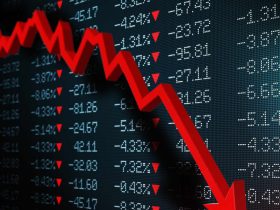Volatility in the typically staid Treasury market has helped lure billions of dollars into popular bond funds as investors have jumped at the opportunity to lock in the highest yields in 16 years.
As it turns out, there’s good reason for buyers to be optimistic, even if bond prices continue to slide during the weeks and months ahead.
While some on Wall Street see scope for yields to move even higher, history shows that buyers are virtually guaranteed robust returns during the coming years, likely far surpassing bonds’ performance over the past decade.
As the chart below from strategist Charlie Bilello shows, with yields around 5%, investors can expect 5.4% annualized total returns over the next seven years.
“The single best predictor of future returns for bonds (97% correlation) is the starting yield. And with yields close to 5%, prospective returns haven’t been this high since 2007,” Bilello said.
Treasurys have seen prices slump in 2023, with the market on track to fall for an unprecedented third-consecutive calendar year, according to data from Bank of America.
Even before that, returns were tepid compared to stocks. After trailing returns in the stock market for most of the postcrisis period, Treasury bonds issued when interest rates were near-zero have more recently saddled investors with eye-popping losses, with some 30-year bonds down more than 50%.
See: How Treasury market upheaval is rippling through global markets, in 4 charts
But more recently some investors have seen a silver lining. As Treasury yields have surged, money has poured into the iShares 20+ Year Treasury Bond ETF
TLT,
the most popular Treasury ETF. Although the ETF, known by its ticker TLT, has fallen 12.1% since the start of 2023, $19 billion has flowed in, the most for any calendar year since the fund’s creation in 2002, according to FactSet data.
Bonds were mostly a side show during the years after the 2008 financial crisis, as rock-bottom interest rates helped inspire a phenomenon that some on Wall Street referred to as “TINA” — shorthand for “There Is No Alternative” to stocks.
This helped inspire a decade-long bull market that began in March 2009 and didn’t end until March 2020, as the COVID-19 pandemic kicked into full swing. During the past 10 years, the S&P 500 has gained more than 190% on a total return basis, while TLT is down more than 1%. Bilello described this as a “lost decade” for bonds in emailed commentary.
But with interest rates higher than they’ve been in two decades, the coming years aren’t looking as favorable for stocks. As MarketWatch noted last week, the potential benefit of owning stocks over bonds has shrunk to its lowest level in 21 years, prompting some to question whether stocks are still worth the additional risk.
See: Potential benefit of owning stocks over bonds has shrunk to its lowest level in 21 years
What’s more, “bond math” shows investors likely have more to gain than they have to lose from buying bonds at these levels.
David Rosenberg, a former Merrill Lynch economist and founder of Rosenberg Research, said in a recent note to clients that with yields at 5%, the 10-year Treasury note would see a total return of 8.5% over the next 12 months should yields fall 50 basis points. However, a 50 basis point increase would leave investors with a gain of 1%, since some of the decline in price would be offset by hefty coupon payments.
See: ‘Bond math’ shows traders bold enough to bet on Treasurys could reap dazzling returns with little risk
This worked out the last time yields were at these levels, Rosenberg noted.
“Remember, the last time we closed with a 5-handle [on the 10-year Treasury yield] back on July 19th, 2007, the total return in the 10-year note over the ensuing twelve months was +11.5%,” Rosenberg said.
Treasury yields were trading back near their 16-year highs on Wednesday. The yield on the 10-year Treasury
BX:TMUBMUSD10Y
climbed 11.2 basis points to 4.952% based on 3 p.m. Eastern Time levels, according to FactSet data. Meanwhile, the yield on the 30-year Treasury
BX:TMUBMUSD30Y
jumped 12.7 basis points to 5.09%. Bond yields move inversely to prices.
Read the full article here











Leave a Reply